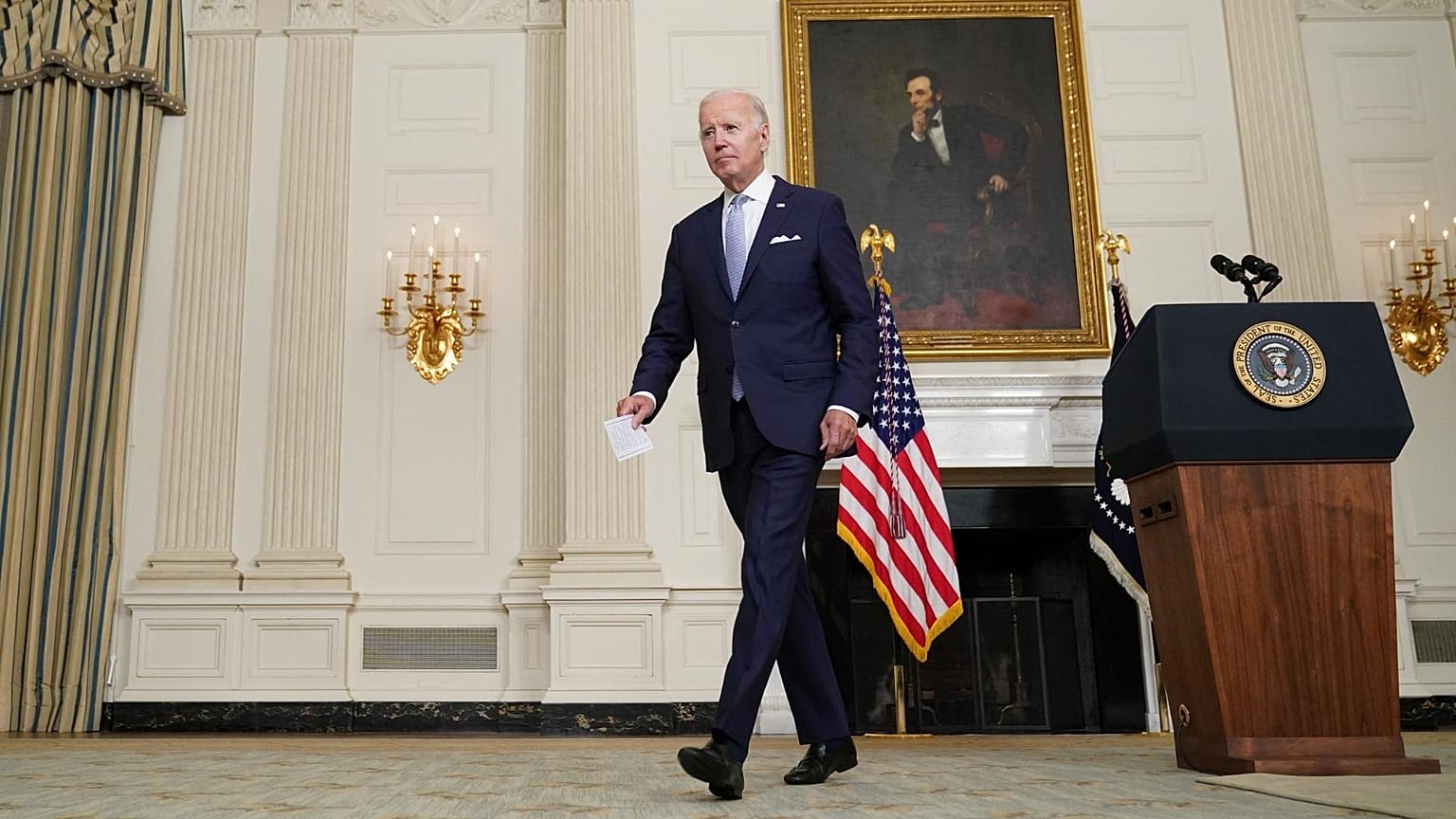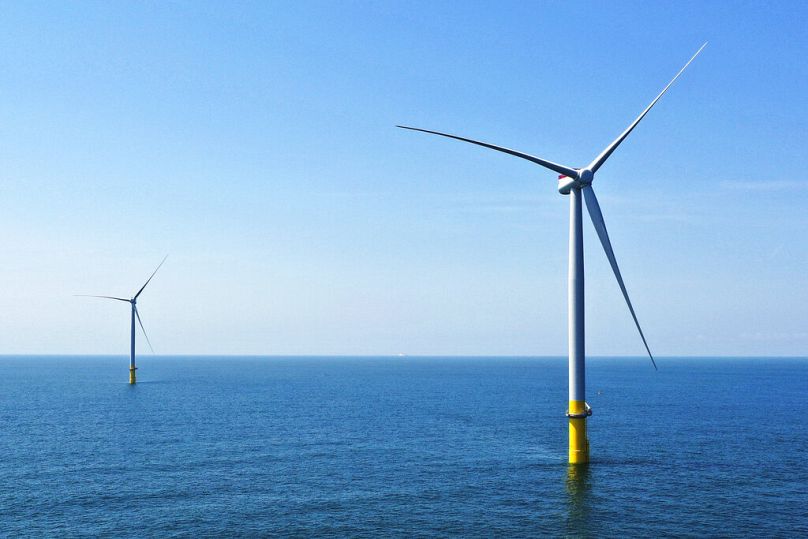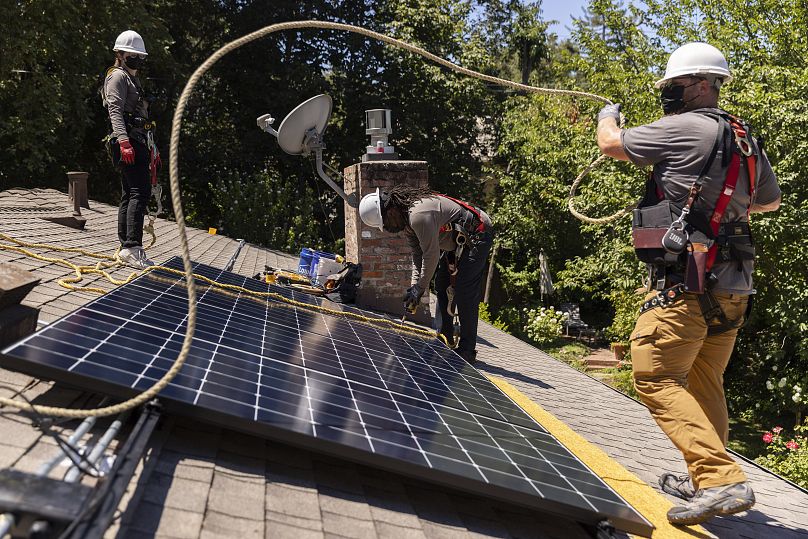Is the newly passed bill really good news for the climate? The answer is complicated.
 ADVERTISEMENT
ADVERTISEMENT
The US Senate has just approved a bill which includes America’s most significant investment in climate action.
Alongside healthcare commitments, the Inflation Reduction Act allocates $369 billion (€361 billion) to renewable energy and reducing greenhouse gas emissions. Experts at several analysis firms have estimated that it could cut emissions in the US by around 40 per cent by 2030.
President Joe Biden called it the “largest investment ever in combatting the existential crisis of climate change,” praising it for “making the wealthiest corporations finally pay their fair share”. It could bring the country close to Biden’s goal of cutting emissions in half by the end of the decade.
The bill gained support from all 50 Democratic Party members in the Senate with a tie-breaking vote made by Vice President Kamala Harris. But the approval came after an overnight debate which saw the Republican Party try to unsuccessfully work in several amendments.
Now it will move to the House where Biden has urged this version of the Inflation Reduction Act to be passed into law as soon as possible.
But what exactly will this $369 billion in investment go to and is this really the historic breakthrough it is being slated as?
1. Investment in clean energy
The Inflation Reduction Act extends a number of tax credits already available for renewable energy. It also creates new incentives for investment in clean energy technology or energy generation.
Billions of dollars will be put towards expanding wind and solar power. It could more than triple clean energy production in the US according to an analysis from the American Clean Power Association - enough to power 110 million homes.
Investment in improving clean energy provision for industrial sources like construction, which often have a hefty carbon footprint, will also help cut the country’s emissions. And the bill includes incentives for companies to manufacture more green tech needed to do this in the US.
2. Tax credits for electric vehicles, solar panels and more
Also included in the bill are incentives for consumers looking to invest in green technology.
There is a home improvement credit which allows households to deduct 30 per cent of the cost of improvements like heat pumps or insulation from their taxes. A further deduction of 30 per cent of the cost of solar panels and battery storage will also be available.
Those looking to replace their cars with electric vehicles could also benefit from tax credits. For couples who earn less than $300,000 (€294,151) a year and individuals on less than $150,000 (€147,000), there will be a $7,500 (€7,353) credit on new EVs and $4,000 (€3,922) for used ones.
Rewiring America, a non-profit that promotes energy efficiency, estimates that these tax credits and other measures included in the bill could save US households around $1,800 (€1,767) a year.
3. Billions for communities suffering the most from pollution
The Inflation Reduction Act includes $60 billion (€59 billion) for those facing the worst impacts of fossil fuel pollution. It aims to help disadvantaged communities to monitor and clean up pollution while building resilience to the consequences of the climate crisis.
It also sets the first methane fee which will penalise companies emitting excessive amounts of this powerful greenhouse gas.
The reduction in pollution that the bill could bring about would save up to 3,900 lives a year by 2030, according to energy and climate policy firm Energy Innovation. Importantly, the organisation’s modelling shows that deaths would decline by a higher percentage in communities of colour where the consequences of pollution are often concentrated.
4. More green jobs will be created
As the Inflation Reduction Act encourages the manufacture of clean technology in the US and boosts renewable energy production, it is likely to create green jobs.
Energy Innovation estimates that around 1.5 million new roles in construction, manufacturing and service could be created by 2030.
But the bill will also make access to these jobs more equitable by ensuring that companies taking advantage of the tax credits pay workers fairly and offer positions to apprentices. This could help to diversify the workforce and increase the pool of people with skills in these green industries.
5. Not everyone is happy with the bill
Though many have praised the Inflation Reduction Act for its commitment to investing in renewable energy, there are concerns over what it offers to fossil fuel companies.
A group of 350 climate groups signed a letter last week calling on the US government not to include what they describe as “handouts to the fossil fuel industry” or invest in “fossil fuel industry scams” to reduce emissions.
“Permitting new fossil fuel projects will further entrench us in a fossil fuel economy for decades to come – and constitutes a violent betrayal of your pledge to combat environmental racism and destruction,” the letter reads.
Senator Bernie Sanders also added his signature to the letter, saying in an official statement ahead of its approval that it includes a “huge giveaway to the fossil fuel industry”.
Sanders said that the fossil fuel industry will receive billions of dollars in new tax breaks and subsidies over the next 10 years. He also pointed out that up to 60 million acres (243 million hectares) of public waters must be offered up for sale every year to the oil and gas industry as part of the bill before offshore wind developments can be approved.
A further 2 million acres (809,371 hectares) of land will also be offered for sale before leases for renewable energy development can go ahead.
“In total, this bill will offer the fossil fuel industry up to 700 million acres (283 million hectares) of public lands and waters to oil and gas drilling over the next decade – far more than the oil and gas industry could possibly use,” Sanders added.



















